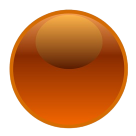As many as 26 medicinal drugs are technically no longer "essential" in the Indian pharmaceutical market, as per the revised National List of Essential Medicines (NLEM) released by Union Health Minister Mansukh Mandaviya today. In the list, 384 drugs from 27 categories do not feature.
Ranitidine, often taken for acidity and other stomach-related ailments and sold under brand names like Rantac, Zinetac and Aciloc, is no longer essential, for example. It has been removed due to concerns it may cause cancer.
In 2020, the Food and Drug Administration (FDA) had recalled all ranitidine products (injectable and oral) after the revelation of low-level N-nitrosodimethylamine (NDMA) presence; according to a study published by the Indian Journal of Pharmacology, N-Nitrosamines are associated with stomach, oesophagus, nasopharynx, and bladder cancers.
As many as 34 drugs — including some anti-infectives like ivermectin, mupirocin and nicotine replacement therapy — have been added to the NLEM, taking the total drugs under it to 384.
Endocrine medicines and contraceptives fludrocortisone, ormeloxifene, insulin glargine and teneligliptin had also been added to the list. Montelukast, which acts on the respiratory tract, and the ophthalmological drug Latanoprost are also in the list.
Cardiovascular medicines Dabigatran and Tenecteplase are also included.
This is the full list of medicines removed from the NLEM 2022:
- Alteplase
- Atenolol
- Bleaching Powder
- Capreomycin
- Cetrimide
- Chlorpheniramine
- Diloxanide furoate
- Dimercaprol
- Erythromycin
- Ethinylestradiol
- Ethinylestradiol(A) + Norethisterone (B)
- Ganciclovir
- Kanamycin
- Lamivudine (A) + Nevirapine (B) + Stavudine (C)
- Leflunomide
- Methyldopa
- Nicotinamide
- Pegylated interferon alfa 2a, Pegylated interferon alfa 2b
- Pentamidine
- Prilocaine (A) + Lignocaine (B)
- Procarbazine
- Ranitidine
- Rifabutin
- Stavudine (A) + Lamivudine (B)
- Sucralfate
- White Petrolatum
What happens when the government declares that a drug is "essential"?
Once a drug is labelled as "essential" by the union government, the manufacturer, wholesaler and retailer of the drug can no longer determine its price even if it still enjoys the minimum TRIPs period of protection from being copied as generic drugs. The National Pharmaceutical Pricing Authority (NPPA) decides the price while not interfering otherwise with the copyright.
Strange as it may sound, medicines in India are not a subject of the health domain but of the chemical domain. The NPPA is an office under the Department of Chemicals and Petrochemicals, Ministry of Chemicals and Fertilisers.
However, medicine in India is regulated by the Central Drugs Standard Control Organisation under the Ministry of Health and Family Welfare.
The category "essential" was earlier called "life-saving", but that was technically ambiguous. Hence the name was changed.
How will the drugs now be priced?
In today's development, the health minister also announced a price cap on commonly-used drugs and said some antibiotics, vaccines and anti-cancer drugs would now be “more affordable and accessible” in an effort to “reduce patients' out-of-pocket expenditure”.
“The National List of Essential Medicines is being published today. Based on that… the National Pharma Pricing Authority will set its ceiling price… it is also based on this that it is decided no company increases price (of essential medicines) on its own.”
“It's a very long process. All the work is done by an independent committee. Interacted with more than 350 experts and 140 consultations,” Mandaviya said on the new NLEM.

